The small green spaces that survive between the snaking tarmac, which makes up the UK’s road network, can be havens for wildlife. I am not just talking about grass verges full of wildflowers that attract bees and butterflies. Even the most bare-looking patch of grass next to the busiest stretch of motorway can be home to small mammals, including a colony of dormice in residence next to the M1. These species, in turn, attract some of our most spectacular birds of prey. And that’s not all. Deer, usually nervous of the slightest sound, seemingly become deaf to the roar of engines to graze next to busy roads.
We regularly see these creatures, particularly the birds of prey, when driving along the motorways around Glasgow. On a good day, we will see many birds during one trip. While I love seeing them, there is always a slight frustration that I rarely spot them perched in a place suitable for capturing images. So, recently we decided to head to a location next to the busy M8 motorway to see if it would be suitable for photographing buzzards and kestrels.
Buzzing over a perched buzzard
I captured the image below of a common buzzard on one recent trip to this location. I should probably point out that we were on a proper tarmac walking/cycling path on the opposite side of the motorway from this bird and not wandering along the grass verges (don’t do that, it’s dangerous)! We found the perfect vantage point to watch this bird while it perched in the late afternoon sun.
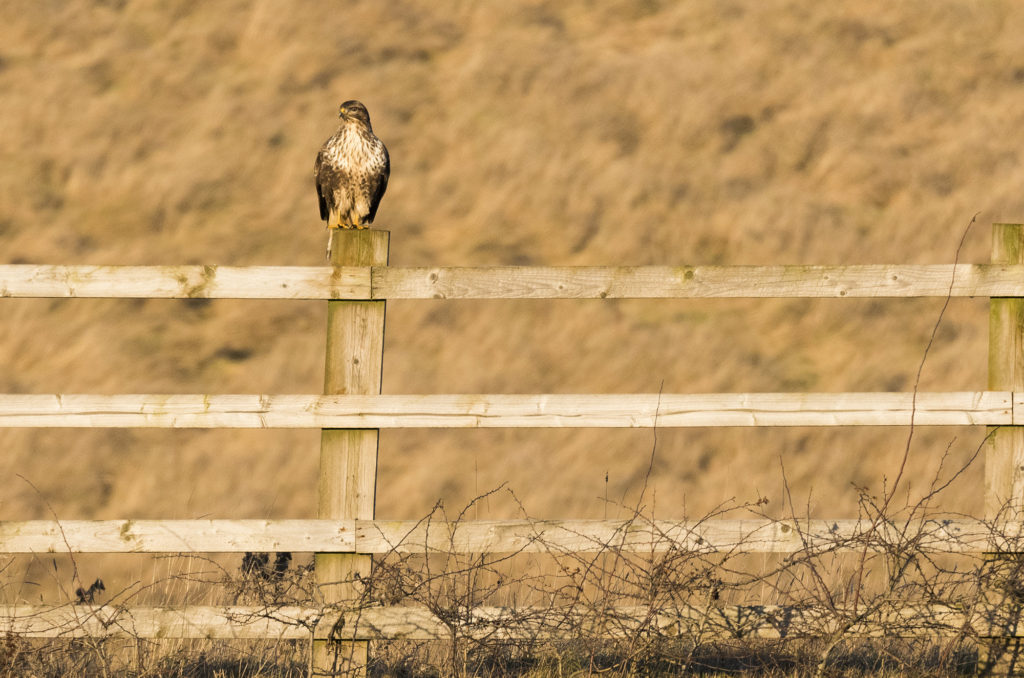
Buzzards aren’t picky when it comes to their prey. As well as more unusual prey items, such as snakes, their diet consists of carrion, other birds, small mammals and earthworms. A fence running along the motorway is an ideal place to rest and wait to see if anything edible meets an unfortunate end on the road.
Their flexibility when it comes to food has helped the UK common buzzard population bounce back in recent times. However, they continue to be threatened by illegal killing over parts of their range, including here in Scotland.
The “motorway falcon”
From one lucky spot to another – below is a female kestrel that I spotted perched on the edge of a road sign. I know that this image will not do well on social media, as the bird is tiny in the frame, but I am currently trying to include more of the environment in some of my images. So, I quite like the juxtaposition of the petite predator hunting from the edge of the huge metal sign.
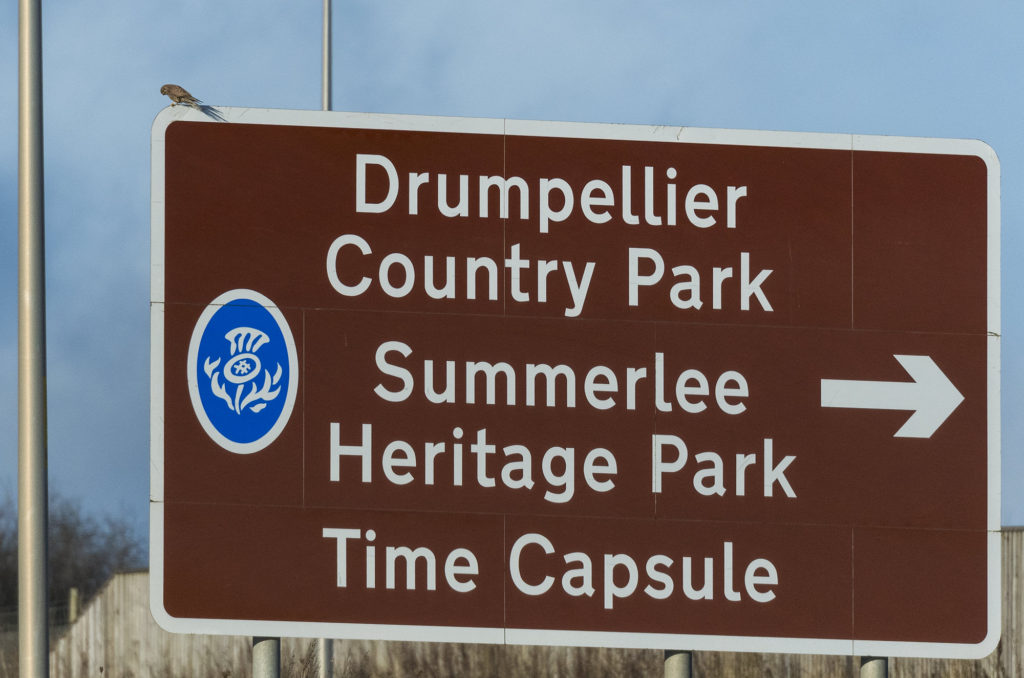
I also spotted another female kestrel from the opposite side of the carriageway. I did have to scramble up a bit of a slope to get into the position to photograph this bird from between fence slats, timing my shots to miss the occasional truck that obliterated my view of her on this slender perch. It was well worth it to get an intimate view of her hunting technique while she had no idea we were watching.
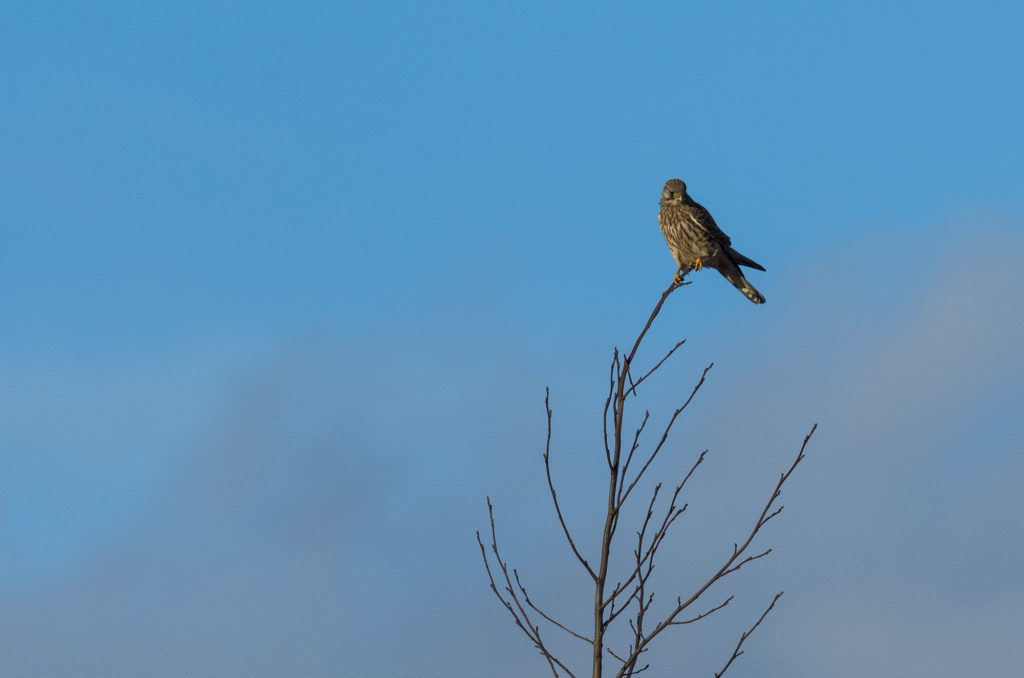
Kestrels spend much of their time hover-hunting, which is how you will often spot them. Their ability to keep their heads still when they hover, to keep watch on their prey, gave them the old country name of the “windhover”. They also hunt from perches – like these – and will adapt their technique depending on the prey they are trying to catch, the weather conditions and how much energy they can afford to expend. They have also learned to adapt to human interference and have been known to wait for farming activity to flush prey for them.
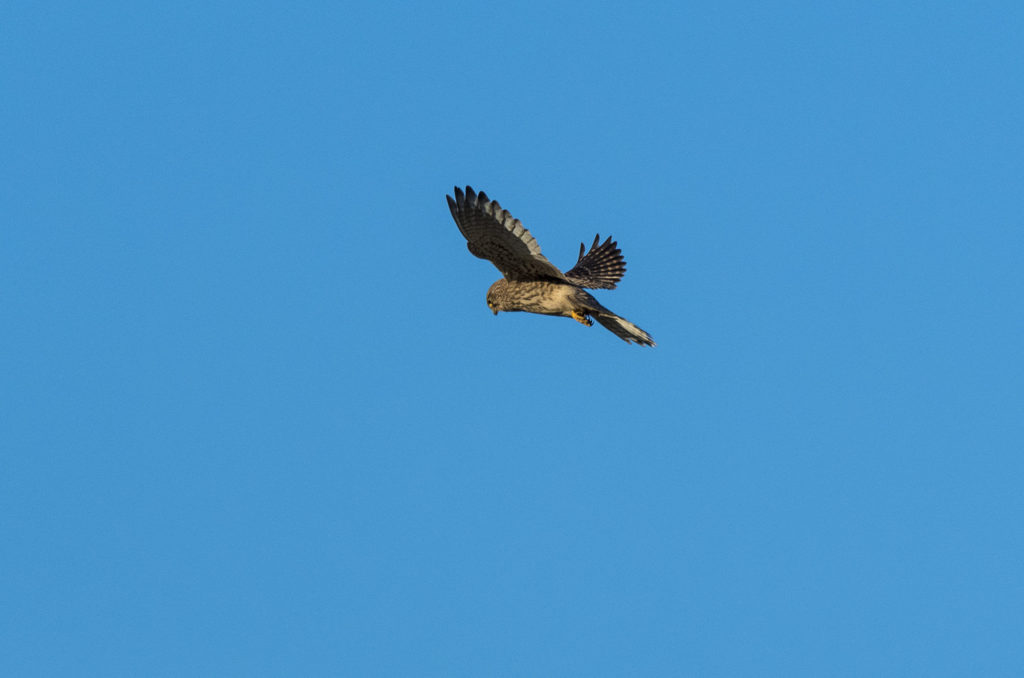
Although the kestrel is a common and widespread species in the UK, the population has fallen by half since 1970. Possible reasons for this decline over the years include changes in farming practices, secondary poisoning (eating poison meant for rats), loss of nesting sites in old trees and persecution.
Watching deer watching us
The images below of roe deer are from a set that represents some magical moments I spent with these beautiful mammals back in January, again next to the motorway.
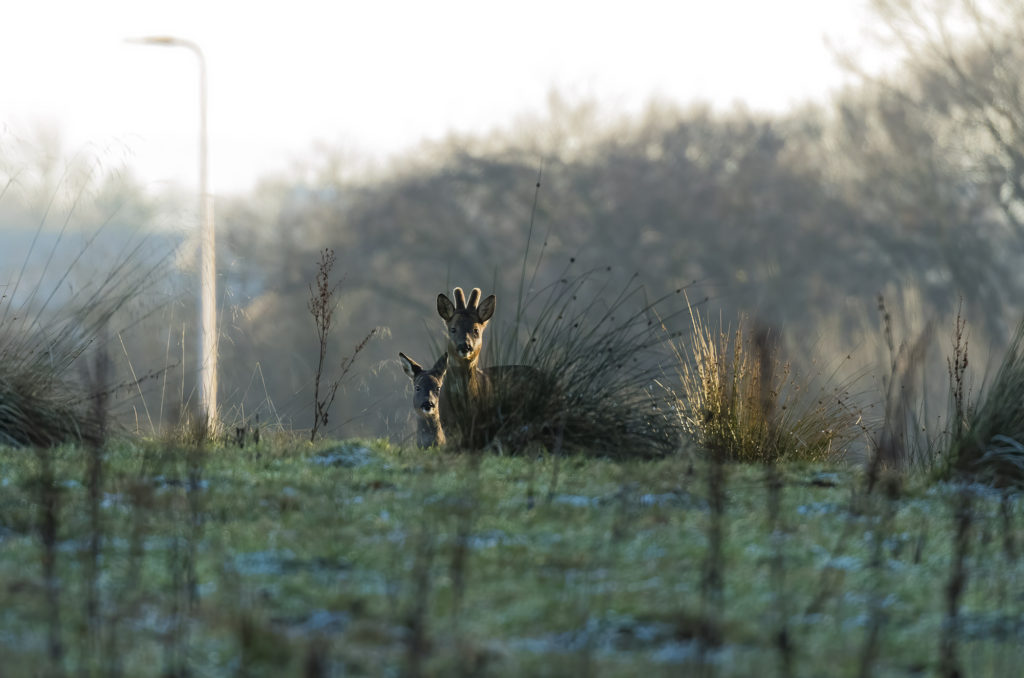
I did not expect to get close to them, as this species tends to be pretty shy. However, I thought I would try and get a better view anyway. I knew that they had spotted me, but I kept edging nearer, pausing when they looked like they were becoming wary. Due to my cautious approach, I was able to photograph them without causing them any distress. Once I had knelt on the frozen ground and captured a few images, I backed up and left them to it.
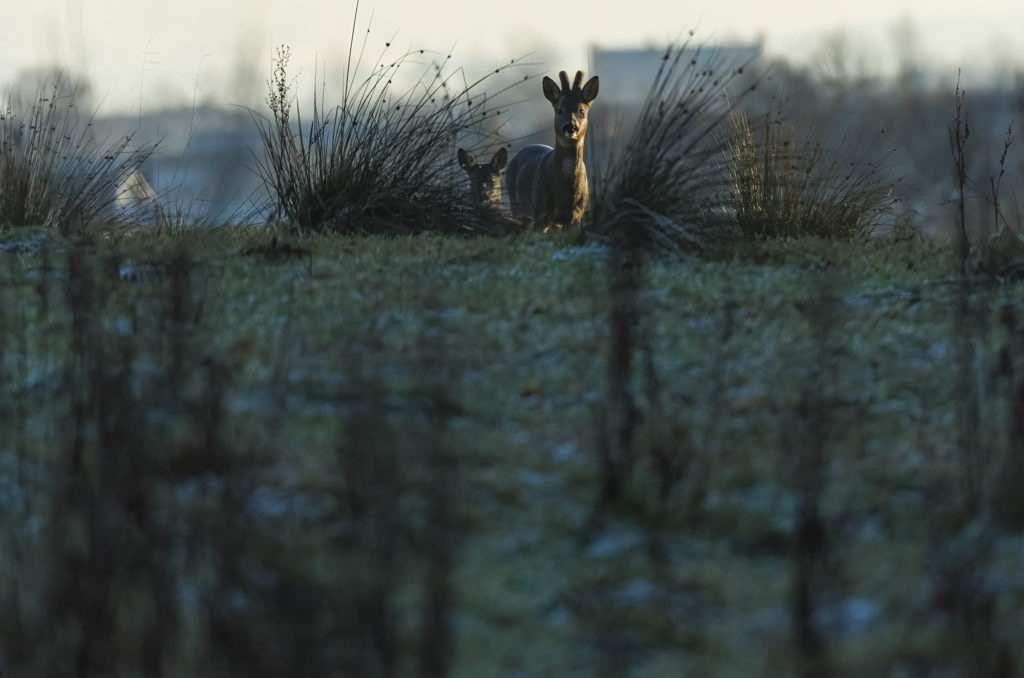
The images below from earlier in the same afternoon walk are an example of the opposite situation; when the deer spotted us before we spotted it. From the moment we saw this beauty, I knew I was on borrowed time if I wanted to capture an image. Our surprise appearance had put it on guard. Luckily we were a good distance away, but the deer remained watchful.
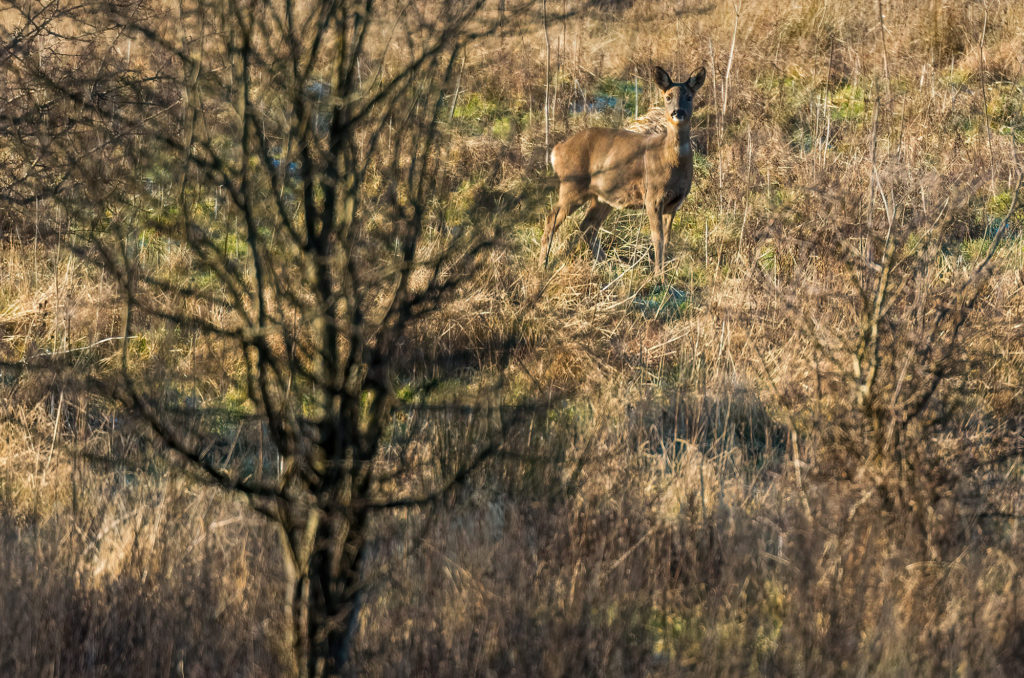
As you can probably guess, the frosty branch in the image below annoys me quite a bit, but I do love the layers of light – from the shadowy trees in the background to the low sun hitting the vegetation just behind the deer. So, this is far from being a great image, but I always enjoy any opportunity to watch these stunning animals.
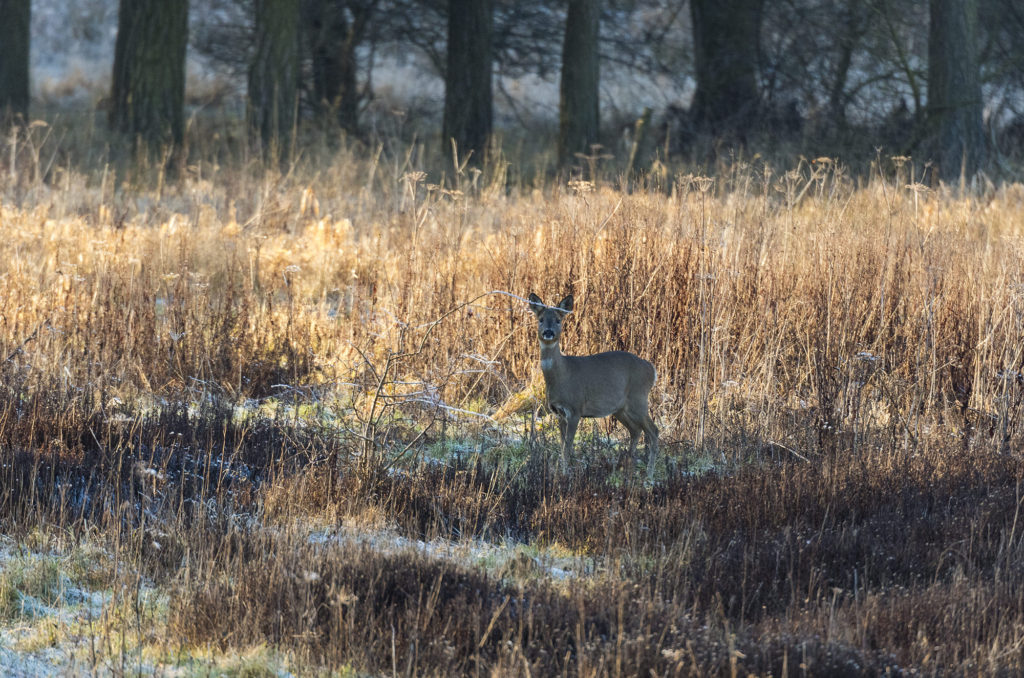
Hopefully, these images demonstrate that, while taking a trip to your nearest motorway may not seem like the best bet for nature photography, if you pause as the traffic rushes by, you may be on the verge of spotting wildlife wonders.

